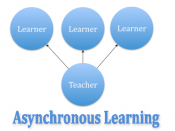IntroductionDuring the 1990s, considerable interest has been generated in the design of constructivist learning environments. The promise of these systems to leverage capabilities of technology, empower learners to pursue unique goals and needs, and re-conceptualize teaching-learning practices has sparked both provocative ideas as well as heated debate. Yet, problems in grounding designs within established theory and research are commonplace, as designers grapple with questions regarding epistemology, assumptions, and methods. Problems in implementation and practice are also commonplace, as pragmatic constraints surface and conflicting values emerge. We suggest three key issues that are likely to dominate the constructivist learning environment landscape.
Inertia and the Tyranny of Tradition: Old Dogs, New Tricks? Although as educators we espouse support for constructivist approaches to teaching and learning, we continue to rely on familiar pedagogical approaches such as lectures, worksheets, and rote learning practices. At the moment, educators perceive such approaches as more compatible with traditional expectations and methods of student assessment and better supported by existing infrastructures.
Stated differently, it is easier and more efficient to maintain current practices than to promulgate approaches for which significant shifts--epistemological, technological, and cultural--are required. (Swef, 2002) In truth, few designers have acknowledged, much less successfully negotiated, the hurdles associated with transforming a highly traditional community of educational practice.
Yet, as constructivist learning environments are repurposed to fit traditional classroom practices, mismatched theoretical foundations, assumptions, or methods may result. Instructional methods or assessment practices are often added to (or taken away from) original designs to make them more compatible with classroom pragmatics and constraints. In essence, constructivist pedagogy is applied to attain traditional goals, and the environment becomes an instance of what Petraglia ( 1998) refers to as "domesticated constructivism" (cited in Karyn, 2003).
For instance, a teacher may intend to use a constructivist environment within a climatology...


